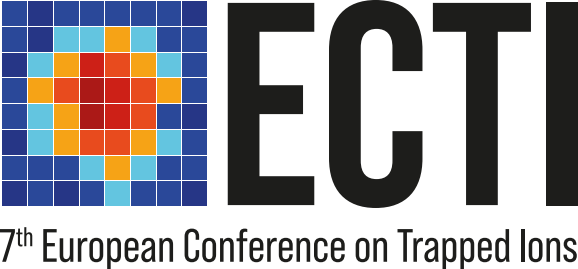Speaker
Description
When considering the design of a trapped-ion quantum computer, a key aspect that emerges is the required operating temperature. Indeed, several advantages can be gained by operating trapped ion systems at low temperatures [1]. For example, cryogenic ion-trap systems boast of enhanced vacuum conditions, leading to increased ion lifetime; lower motional heating rates, increasing both ion lifetime and two-qubit gate fidelity; reduced power dissipation and noise from electronics; and the ability to use superconductors. As such, it is reasonable to suspect that the first large-scale trapped ion quantum computers may also operate under cryogenic temperature conditions.
In this work, an experimental system is presented that acts as a test bench for temperature-controlled trapped ion experiments at cryogenic temperatures. The system uses a Gifford-McMahon cryocooler and feedback-controlled heaters to simulate liquid helium (4.2 K) and liquid nitrogen (77 K) operating conditions with a high temperature stability (e.g. <5 mK recorded at a 9 K over a period of 24 hours). In addition, an ultra-low vibration interface mechanically isolates the cryocooler from the vacuum chamber, resulting in a reduction of vibration amplitude to <15 nm in all axes (dominant peaks at 50 Hz and 100 Hz). The system is designed to harbour a surface ion trap, with successful trapping achieved on multiple trap designs. Thus, offering a platform to characterise and develop technologies for cryogenic trapped-ion quantum computing directly using trapped ions. Examples of these technologies include: a novel cryogenic vario-coupling resonator design for generation of trapping radio-frequency voltages, a cryogenic low-power atomic oven and cryogenic microwave delivery. Additionally, cryopumping enables fast turn-around times for experiments, with ultra-high vacuum achieved in less than a day after opening the system for modification; compared to a typical 3 weeks when baking room-temperature systems. Finally, the low-noise characteristics of the cryogenic system make it an excellent platform for high-fidelity two-qubit microwave gate experiments. Notably, noise intrinsic to experimental hardware can be investigated with reduced interference from the environment, e.g. motional decoherence due to heating of the ion.
[1] D. C. S. D. (2015). Cryogenic ion trapping for next generation quantum technologies. Ph.D. thesis, University of Sussex.

